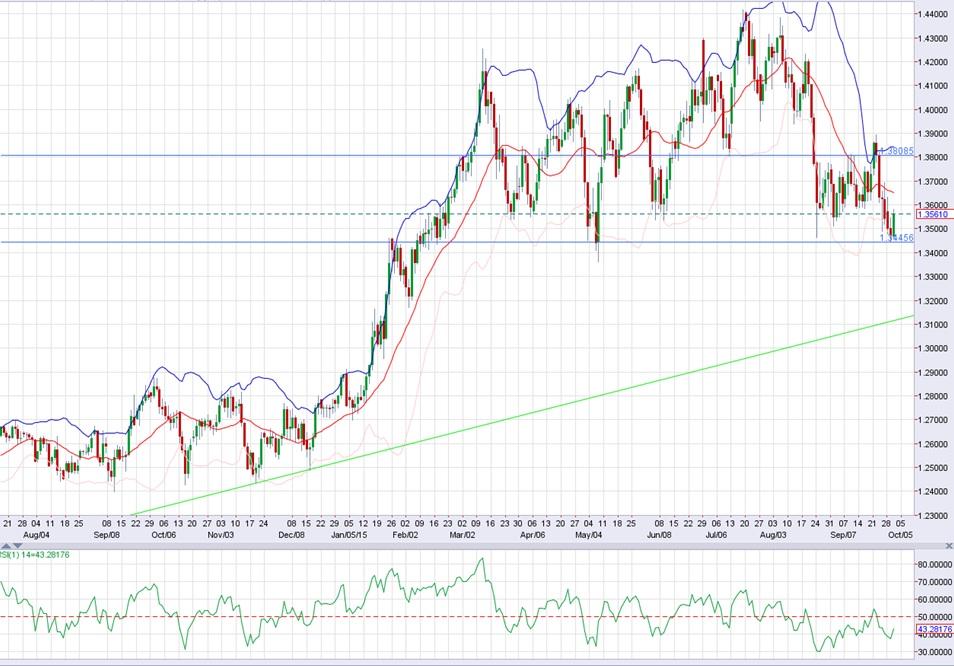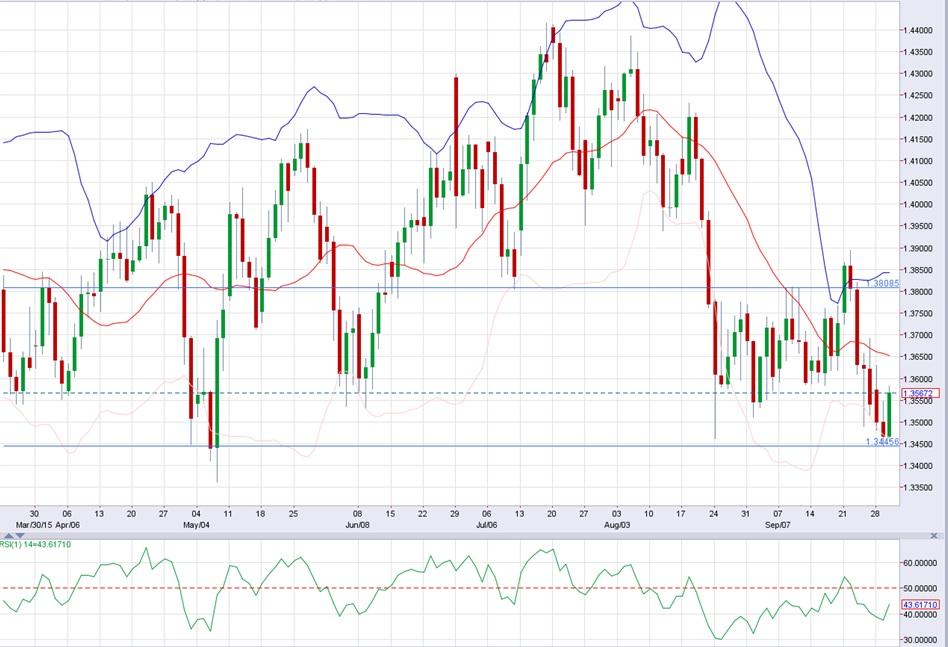- Sterling euro stuck in a 3 cent trading range
- Conflicting communication from policy makers
- Lower Eurozone inflation weighs on the Euro


Sterling Euro exchange rate was kept within a well-defined 3 cent trading range, with only one minor violation occurring. This violation to the topside turned out to be nothing more than a false break with no real follow through. This disappointing price action could have served as a warning sign to the market that momentum was waning as all rallies have tended to be sold into. Since then Sterling Euro has been under pressure and is currently at the bottom of this 3 cent range. With no aggressive rebounds from the current support level, this could be viewed as a warning that further downside is yet to come.
The seesaw price action was produced by the mixed nature of the data releases and conflicting central banker sentiment. The UK manufacturing sector growth forecast have been again slashed after enduring a “rollercoaster of risks” over the past quarter that damaged confidence in the sector. The annual rate of consumer price inflation fell back to 0% in August. The unemployment rate however declined to the lowest in seven years and wage growth hit a six-year high which will boost consumer spending power which should lead to higher inflation later in the year.
The Bank of England monetary policy committee once again expressed conflicting opinions; Mark Carney sees no signs of a developing deflationary mind-set in the UK and thinks that China's woes will not derail a rate rise. He even went as far as to hinting rates could rise in the coming months. Only one member of the rate-setting committee however pushed for an immediate rate rise with many of the voting members still concerned about the low inflation and a slowdown in China which may hold back exports and business investment. One member Andy Haldane who is the Chief economist at the BOE said Britain could require 'radical' action in order to keep the recovery on track which could call for further cuts in the interest rates. Haldane sees the balance of risks to UK growth, and UK inflation skewed to the downside. With conflicting opinions still evident within the BOE, I think that the only clear message is that the UK won’t raise rates as early as many had first thought.
News from the Eurozone was once again mixed , the Eurozone economy grew more rapidly than previously estimated as a pickup in exports offset a slowdown in household consumption and a decline in business and government investment - Many remain reluctant to invest despite the European Central Bank’s monetary easing driving down benchmark costs.
Economic sentiment in Europe's powerhouse Germany continued to deteriorate as investor optimism dropped to a 10 month low. Business sentiment however surprisingly rose in September, ignoring the plunges in the Chinese and global stock markets but the widening scandal threatening Germany’s most important company has yet to leave its mark. Consumer prices in the Eurozone fell annually in September for the first time since the European Central Bank launched its QE programme as consumer prices in Germany shrank .2% month on month. Inflation in the Eurozone is likely to fall further over the coming month - adding to the ECB headache.
ECB Chief Draghi had already lowered inflation and GDP forecasts so the recent Euro strength puts pressure on him as the currency strength threatens to undermine the central bank's efforts to boost inflation in the euro zone. Amid heavy selling in riskier assets related to Chinese economic concerns and expectations of an interest rate rise in the U.S. investors have viewed the euro as a "safe-haven asset. Mr Draghi has stated that he needs more evidence to determine if these factors would have a lasting impact but the bank "would not hesitate” to expand its €1.1 trillion asset purchase programme if Eurozone inflation and growth turned out to be weaker than expected, this stance resulted in the Euro strengthening.
A convincing break of this 3 cent trading range should still indicate which direction the exchange rate is likely to continue for the coming months.
For EUR Buyers
Having watched the rate drop from the highs and depending on your time frame one strategy would be to implement a tight stop loss below the recent trading range hoping for a bounce. The fundamental are still pointing to a higher rate so it might be a case of a playing the waiting game. It is essential however to have protection in place encase we see a break to the downside opening up to new lows.For EUR Sellers
Having broken the 6 month up channel, the technical are suggesting there could be more downside to come. From the high’s we are close to 9 cents lower so now would be a good time to still reduce your exposure. Once you have reduced your exposure watching how the prices react - if the trading range breaks to the downside with your remaining balance target 2 cents lower to the primary trend line support.Trading foreign exchange on margin carries a high level of risk, and may not be suitable for all investors. The high degree of leverage can work against you as well as for you. Before deciding to invest in foreign exchange you should carefully consider your investment objectives, level of experience, and risk appetite. The possibility exists that you could sustain a loss of some or all of your initial investment and therefore you should not invest money that you cannot afford to lose. You should be aware of all the risks associated with foreign exchange trading, and seek advice from an independent financial advisor if you have any doubts.
Recommended Content
Editors’ Picks
EUR/USD stays below 1.0700 after US data

EUR/USD stays in a consolidation phase below 1.0700 in the early American session on Wednesday. The data from the US showed a strong increase in Durable Goods Orders, supporting the USD and making it difficult for the pair to gain traction.
USD/JPY refreshes 34-year high, attacks 155.00 as intervention risks loom

USD/JPY is renewing a multi-decade high, closing in on 155.00. Traders turn cautious on heightened risks of Japan's FX intervention. Broad US Dollar rebound aids the upside in the major. US Durable Goods data are next on tap.
Gold trades on the back foot, manages to hold above $2,300

Gold struggles to stage a rebound midweek following Monday's sharp decline but manages to hold above $2,300. The benchmark 10-year US Treasury bond yield stays in the green above 4.6% after US data, not allowing the pair to reverse its direction.
Worldcoin looks set for comeback despite Nvidia’s 22% crash Premium

Worldcoin price is in a better position than last week's and shows signs of a potential comeback. This development occurs amid the sharp decline in the valuation of the popular GPU manufacturer Nvidia.
Three fundamentals for the week: US GDP, BoJ and the Fed's favorite inflation gauge stand out Premium

While it is hard to predict when geopolitical news erupts, the level of tension is lower – allowing for key data to have its say. This week's US figures are set to shape the Federal Reserve's decision next week – and the Bank of Japan may struggle to halt the Yen's deterioration.